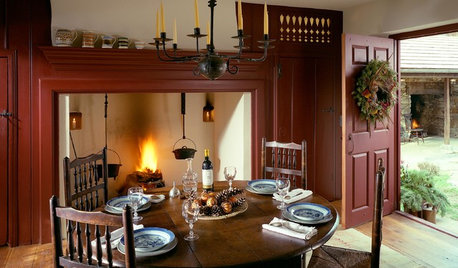Dormant Figs: Temperature, light, moisture/ Newibe questions
jenia
14 years ago
Related Stories

HOUSEPLANTSPlay Up Some Fiddleleaf Figs for a Lively Indoor Tune
Strike a dramatic chord in a minimalist scene or a country note in a rustic setting — fiddleleaf fig plants harmonize with any style
Full Story
MONTHLY HOME CHECKLISTSTo-Dos: Your November Home Checklist
Give your home a festive holiday air without running out of steam, and stay safe and snug as temperatures drop
Full Story
GARDENING AND LANDSCAPINGPatio Details: Sliding Fabric Panels Filter the Light Just Right
Stepping up to the harsh sun and heat of the desert Southwest, this intimate patio is an exotic escape right outside
Full Story
HOUSEPLANTS8 Essentials for Healthy Indoor Plants
Houseplants add so much to our homes — and can thrive when grown in the right conditions. Keep these tips in mind
Full Story
GARDENING GUIDESGarden Myths to Debunk as You Dig This Fall and Rest Over Winter
Termites hate wood mulch, don’t amend soil for trees, avoid gravel in planters — and more nuggets of garden wisdom
Full Story
LANDSCAPE DESIGNIs It Time to Consider Fake Grass?
With more realistic-looking options than ever, synthetic turf can be a boon. Find the benefits and an installation how-to here
Full Story
GARDENING GUIDESHow to Keep Your Citrus Trees Well Fed and Healthy
Ripe for some citrus fertilizer know-how? This mini guide will help your lemon, orange and grapefruit trees flourish
Full Story
MOST POPULAR5 Ways to Hide That Big Air Conditioner in Your Yard
Don’t sweat that boxy A/C unit. Here’s how to place it out of sight and out of mind
Full Story
MONTHLY HOME CHECKLISTSYour Fall Home Maintenance Checklist
Prep your house and yard for cold weather with this list of things to do in an hour or over a weekend
Full Story
GREAT HOME PROJECTSHow to Replace Your Lawn With a Garden
New project for a new year: Lose the turfgrass for energy savings, wildlife friendliness and lower maintenance
Full StoryMore Discussions






tapla (mid-Michigan, USDA z5b-6a)
jeniaOriginal Author
Related Professionals
Brentwood Landscape Architects & Landscape Designers · Sahuarita Landscape Architects & Landscape Designers · Pelham Landscape Contractors · Addison Landscape Contractors · Canby Landscape Contractors · Lancaster Landscape Contractors · Nutley Landscape Contractors · Wickliffe Landscape Contractors · Dayton Decks, Patios & Outdoor Enclosures · Hampton Bays Decks, Patios & Outdoor Enclosures · Markham Decks, Patios & Outdoor Enclosures · Citrus Heights Fence Contractors · Irvine Fence Contractors · Lady Lake Fence Contractors · Winter Park Fence Contractorsgiants_2007
tapla (mid-Michigan, USDA z5b-6a)
ali-b